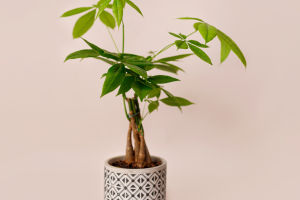Crassula tetragona, commonly known as the “mini pine tree,” is a fascinating succulent with needle-like leaves that resemble the branches of a conifer.
This hardy plant is native to South Africa and is popular among plant enthusiasts for its easygoing nature and unique appearance.
However, like all succulents, it has specific care needs. Let’s dive into the essentials for keeping your Crassula tetragona healthy and vibrant.
1. Light Requirements
Crassula tetragona thrives in bright, indirect sunlight. Place it near a south- or east-facing window where it can get at least 4-6 hours of light daily. While it can tolerate some direct sunlight, too much can cause leaf scorch, especially in hot climates.
In lower-light environments, you may notice the plant stretching or “etiolating” as it seeks more light, which can affect its compact look. If natural light is insufficient, a grow light can be used to supplement lighting. Remember to rotate the plant regularly for even growth.
2. Watering Needs
As with most succulents, Crassula tetragona is drought-tolerant and can suffer from overwatering. Use the “soak and dry” method: water thoroughly until excess water drains out, then let the soil dry completely before watering again.
During the growing season in spring and summer, water about every two weeks, adjusting as needed based on your environment. In the dormant winter months, water less frequently, possibly once a month or less. Signs of underwatering include wrinkling leaves, while mushy, soft leaves often indicate overwatering.
3. Soil Preferences
Crassula tetragona requires well-draining soil to prevent root rot. A cactus or succulent mix is ideal, as it offers the right balance of nutrients and drainage. You can also make your own mix by combining regular potting soil with coarse sand or perlite in a 2:1 ratio. Avoid dense, clay-like soils that retain moisture, as this plant’s roots can quickly become waterlogged.
Consider using pots with drainage holes to allow excess water to escape and further reduce the risk of root rot.
4. Temperature and Humidity
This plant is adaptable to various temperatures, but it prefers moderate climates. The ideal temperature range is between 65-80°F (18-27°C), and it can tolerate brief periods of cold as low as 30°F (-1°C). However, prolonged exposure to frost can damage or even make it die, so be sure to bring it indoors if temperatures drop significantly.
Humidity is generally not a concern for Crassula tetragona. It does well in standard indoor humidity levels and doesn’t require misting or additional humidity.
5. Fertilization
Crassula tetragona doesn’t require much fertilizer, but a little boost during its growing season (spring and summer) can promote growth. Use a balanced, diluted succulent fertilizer once a month. Avoid over-fertilizing, as this can lead to nutrient build-up in the soil, which can harm the plant’s roots.
Skip fertilization in fall and winter when the plant enters its dormant phase, as it requires minimal nutrients during this time.
6. Pruning and Maintenance
This succulent doesn’t need much pruning, but occasional trimming can help maintain its shape and promote new growth. Use sterilized scissors or pruning shears to trim away dead or damaged leaves and to shape any overgrown branches.
Pruned cuttings can be easily propagated, so you may want to save healthy cuttings to start new plants.
7. Propagation
Propagation is a straightforward way to create new Crassula tetragona plants. Stem cuttings are the most common method. Cut a healthy stem, let it dry for a day or two to prevent rot, then place it in well-draining soil. Keep the soil slightly moist but not wet, and roots should start to develop within a few weeks.
Leaf propagation is also possible but takes longer. Simply place individual leaves on the soil surface and water sparingly until new growth appears.
8. Common Pests and Problems
Though resilient, Crassula tetragona can be prone to pests such as mealybugs and spider mites. Regularly inspect your plant, especially around the stem and leaf joints, and treat infestations with insecticidal soap or isopropanol on a cotton swab.
Yellowing leaves can indicate overwatering, while excessive leaf drop may mean the plant needs more light. Address these issues by adjusting your care routine to meet the plant’s needs.
Caring for Crassula tetragona is simple with the right approach to light, water, and soil. Its distinctive appearance and hardy nature make it an excellent choice for both novice and experienced plant lovers. By following these guidelines, you can enjoy the beauty of this mini pine tree for years to come, and even propagate new ones to expand your collection!


